Córdoba 1 day itinerary. Here’s our guide of what to do and unique things to see in Córdoba old town, a must-visit World Heritage destination in southern Spain.
Discover Córdoba in Spain, the beautiful Andalusian city of a 1000 archways, a fascinating history-infused place that you’ll love. Tread the old streets past the architectural wonders of long ago, visit the Great Mosque-Cathedral and the Alcazar Fortress, cross the magnificent Roman Bridge which has spanned River Guadalquivir for two thousand years, then walk along the embankment to capture perfect views of this World Heritage treasure… the intriguing, unique city of Córdoba.
Follow our footsteps on this updated guide of what to see in Córdoba on a 1 day itinerary.
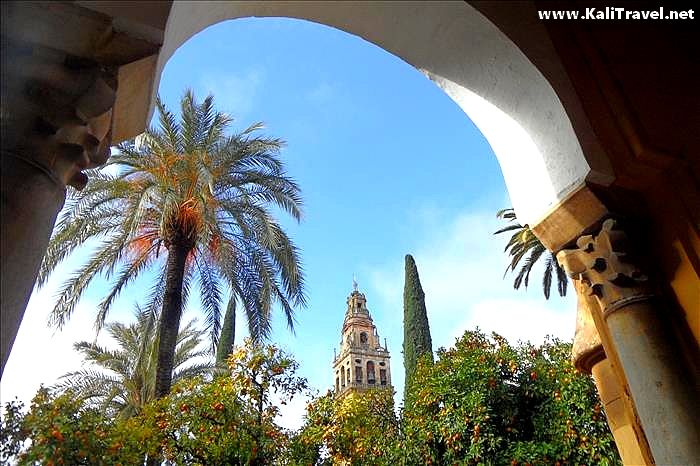
Text and photos by Kali Marco.
Unique Things to See in Córdoba (Spain)
| 1. Córdoba Mosque-Cathedral 2. Patio de los Naranjos Courtyard 3. Minaret Bell Tower 4. Episcopal Palace 5. Calleja de las Flores Patios 6. Casa Árabe Institute | 7. Casa de Sefarad Museum 8. Córdoba Synagogue 9. Artisans’ Bazaar 10. Córdoba Alcázar 11. Royal Stables 12. Caliphal Arab Baths | 13. Plaza del Triunfo 14. Puerta del Puente Gateway 15. Córdoba Roman Bridge 16. Torre de la Calahorra Fortress Tower 17. Albolafia Watermill 18. Alcázar Gardens |
Córdoba sits beside the legendary River Guadalquivir in the heart of Andalucía, in southern Spain. The history of this fascinating city goes way back to ancient times and that atmosphere can be perceived as you wander through the centuries’ old neighbourhoods, discovering the monuments and temples hidden behind archways in the back streets, and the distinctive Cathedral-Mosque which is unique in the world.
Known as City of 4 Cultures, the presence of Roman, Arab, Jewish and Catholic heritage is evident as you wander through the ancient streets of Córdoba Historic Quarter.
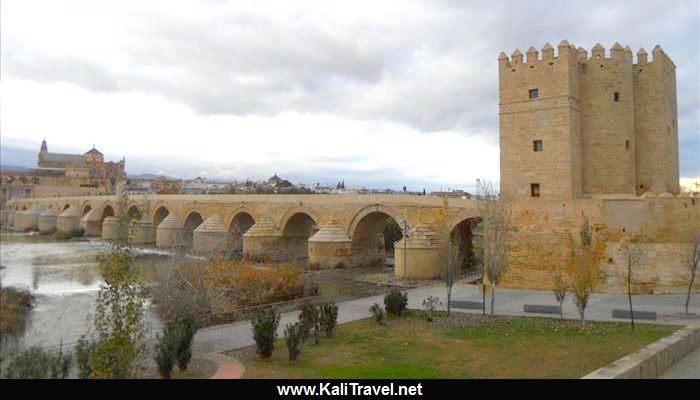
What to See on a 1 Day Itinerary of Córdoba (Spain)
A UNESCO World Heritage Site with one of the largest and best preserved historical quarters in Europe, Córdoba has a charm of its own. Inhabited since the Bronze Age, capital of Bética Province during Roman times, in the 10th century the Caliphate of Córdoba became the grandest, most culturally advanced and opulent city in the world – the capital of Al-Andalus, a Moorish Kingdom in Spain.
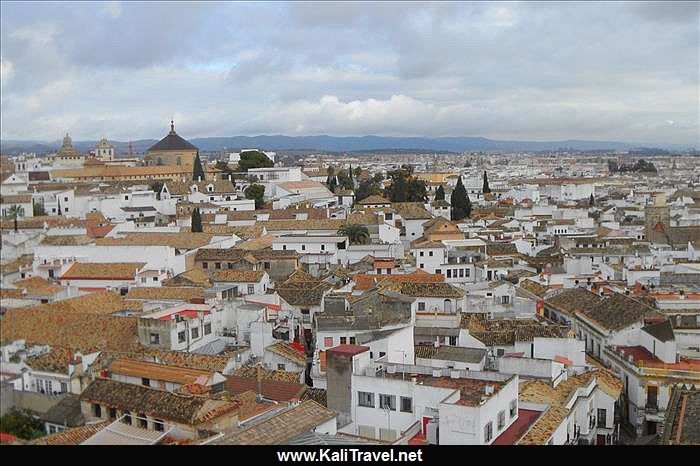
Although it’s possible to see the major sites of Córdoba on a day trip from Seville, if you have time spend at least 2 days in the historic city. This way you can stroll through ancient neighbourhoods which sheltered four iconic cultures, discover the flower-filled patios, enjoy local cuisine, explore the city of a 1000 archways at leisure and truly appreciate the ambience.
When you visit Córdoba, stay for a night or two inside the old city walls, a walk away from Andalusia’s legendary River Guadalquivir. Whether it’s a grand palace, a traditional ‘posada’ inn, or quaintly converted hostel, you’ll want to be in the old quarters not far from the river. The maze of winding streets is pedestrian only, except for the access of authorized vehicles, so give the hotel your car registration number if you’re driving to Córdoba.
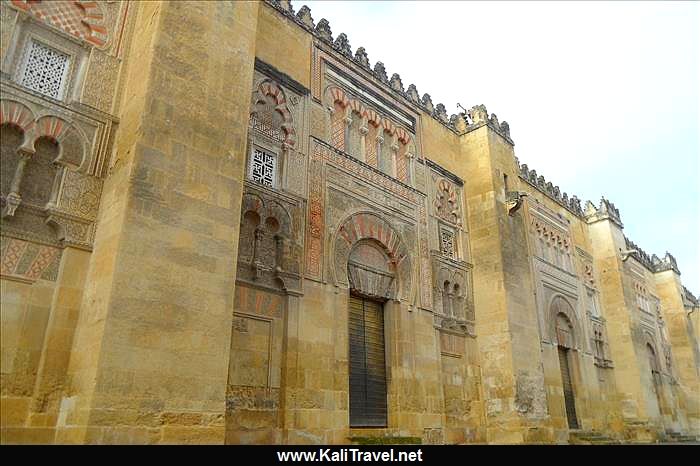
Córdoba Mosque-Cathedral
The labyrinth of medieval passageways all seem to converge on Córdoba’s famous Mosque-Cathedral complex, so you can’t really miss it! Imposing walls engraved in Moorish style, with intricate stonework and decorative archways, encompass a rectangular enclosure with various gateways.
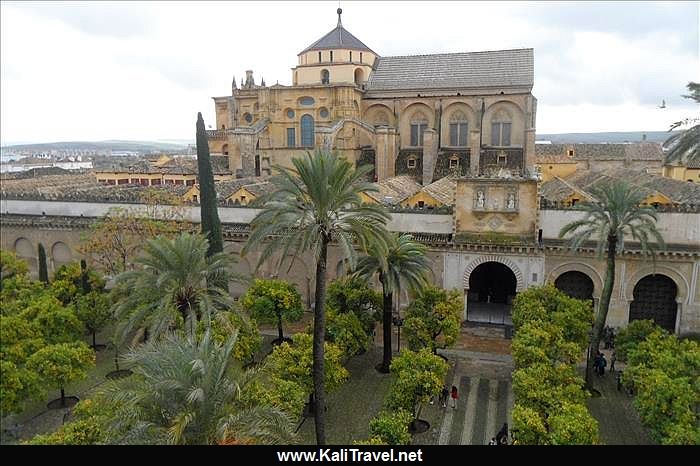
A central courtyard is filled with ornamental orange trees which are bursting with fruit in early December. This scenic patio where the Fountain of Santa Maria spurts water into a pool used for ablutions in bygone eras, is enclosed by traditional porticos -along one side you’ll see the beautiful Mosque-Cathedral built in 786, and opposite the famous minaret bell tower.
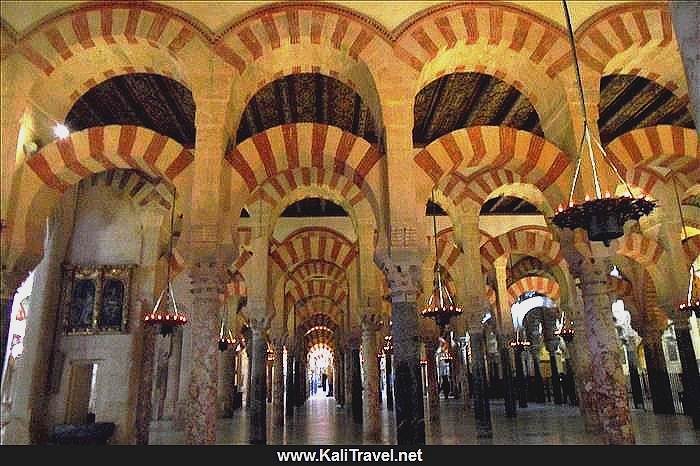
Córdoba Mosque-Cathedral is simply awe-inspiring, inside the temple 856 red and white striped arches stretch across the vast hall.
The Great Mosque was converted into a Cathedral in the 16th century; a series of Catholic chapels with holy images have been set into the original archways on the north wall; the imposing Main Altar (Capilla Mayor) and Choir (Coro) stand dramatically in the centre of the Cathedral, encircled by various prayer rooms.
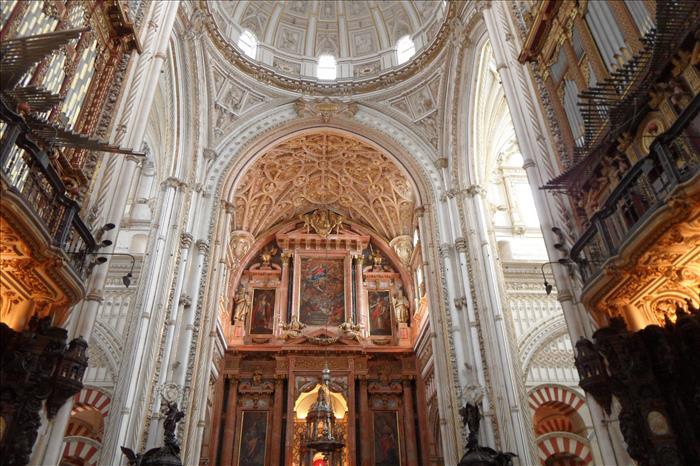
It is believed that a pagan Roman Temple originally stood on this site; later rebuilt as a Christian church by the Visigoths, then reconstructed as a Mosque when the Muslims conquered Spain, it was finally recreated as a Renaissance Cathedral in the Middle Ages.
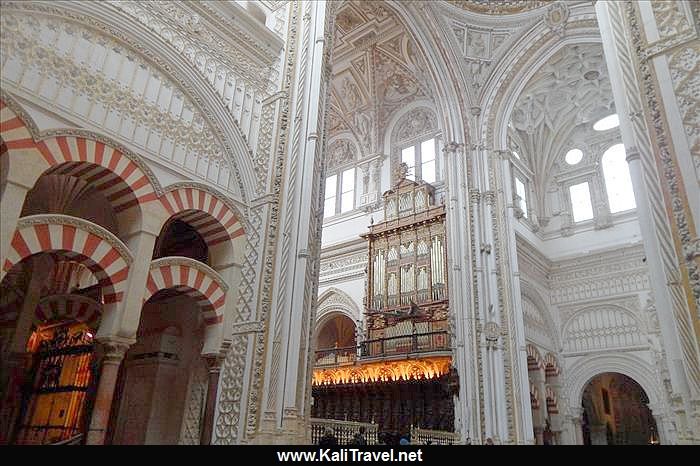
It’s fascinating how materials from the original ancient structures were reused throughout the centuries and you can see the relics and treasures on display in glass cabinets.
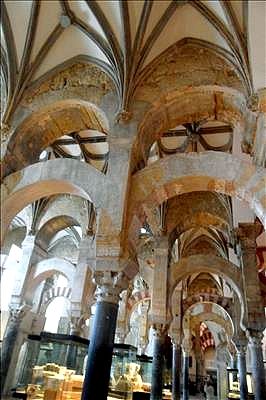
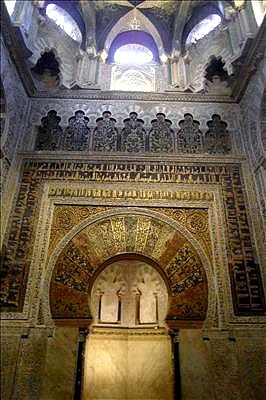
The original Mihrab is reached through a gilded marble archway.
This south facing Muslim prayer chamber is intricately decorated with unique features including the cupola, stained glass and mosaics.
Cordoba Minaret Bell Tower
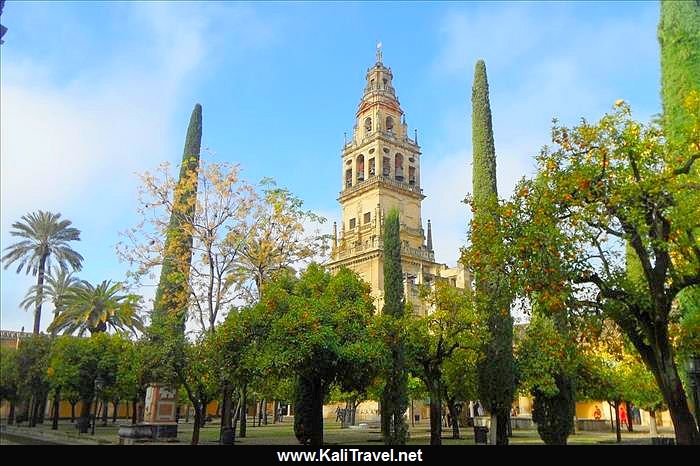
Opposite the Mosque-Cathedral, Córdoba bell tower is sited on the other side of ‘Patio de los Naranjos’ (a separate ticket is needed to enter, at specific times). Dating to 951 it was formerly a minaret, parts of which you can still recognize.
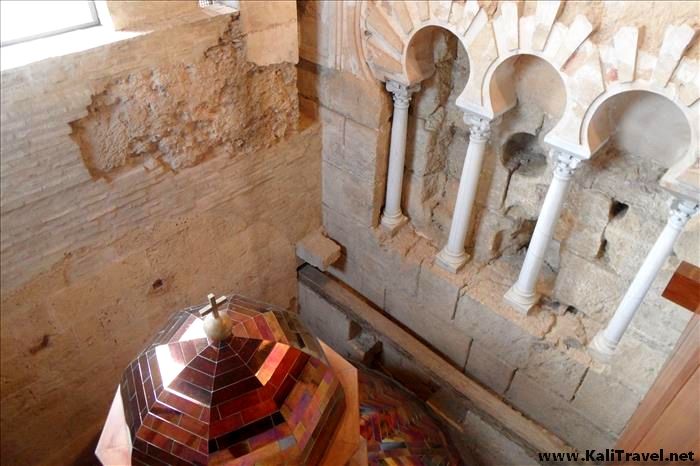
Years ago, a caretaker family lived halfway up the tower, I remember a lady in slippers taking the fee, and showing us through a door to the bell tower. This unusual setup ended a few years ago, the living quarters were removed and the interior restored to show the characteristic striped archways and a dome.
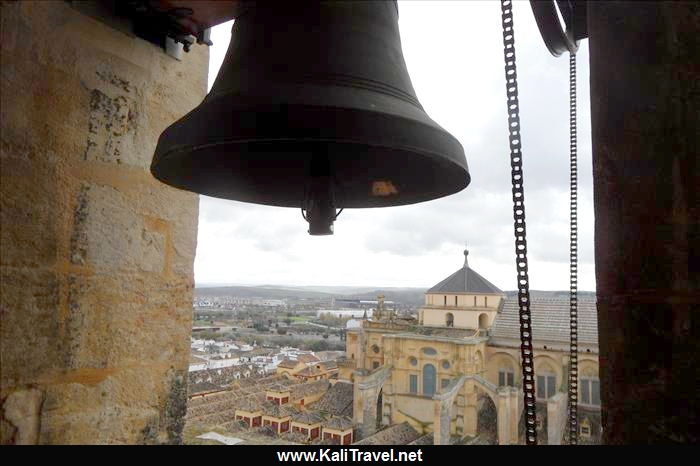
The old tower was raised higher in the 17th century; there are several flights of stairs up to the actual bell tower where you can step outside and walk around under the huge church bells (avoid 12 noon because the chimes are loud!). The staircase continues upwards to a second outdoor gallery which has panoramic views over the city.
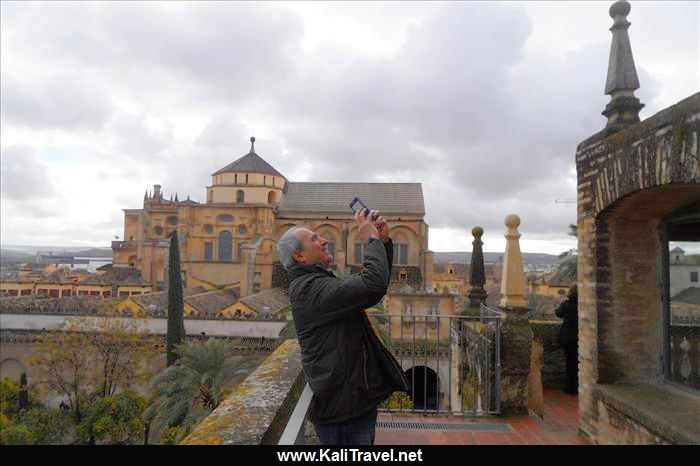
Córdoba Historic Centre
The Mosque-Cathedral is at the heart of Córdoba’s Historic centre and the most famous site to see. However, there’s lots more to see in the surrounding streets.
The grand Episcopal Palace is a symbol of the Catholic cultures. Located opposite the Mosque-Cathedral walls, and the seat of the Bishop of Córdoba since 1236, it was later reformed in Gothic style.
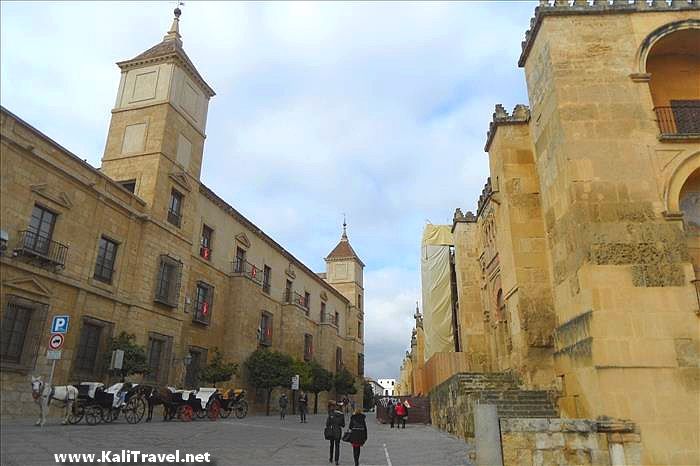
The cathedral district is where daytrippers head first, so it’s understandably geared towards tourists with interesting gift shops selling ceramics and jewellery.
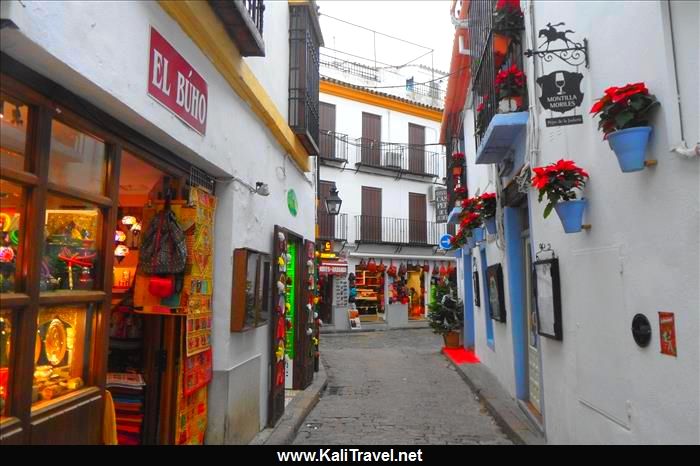
Walk into Calleja de las Flores, a pretty cul-de-sac famous for its hanging flowerpots in the San Basilio district. Not surprisingly, Córdoba is famous for its flower-filled patios. The numerous restaurants in this neighbourhood typically have an inner courtyard terrace filled with colourful geraniums. Many eateries have reasonably priced menus and others offer live Flamenco entertainment in the evenings.
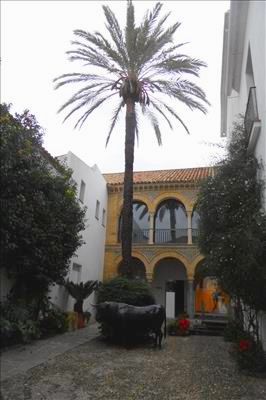
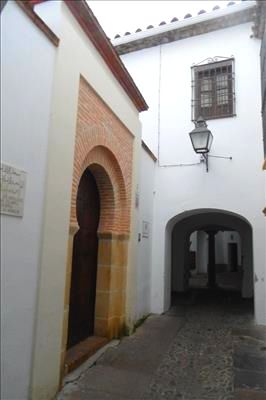
I love discovering the tiny streets and admiring the architecture of the 4 different cultures, finding interesting places. For example, the Casa Árabe Institute is tucked away in a tiny alley with a beautiful ‘teteria’ teahouse just around the corner.
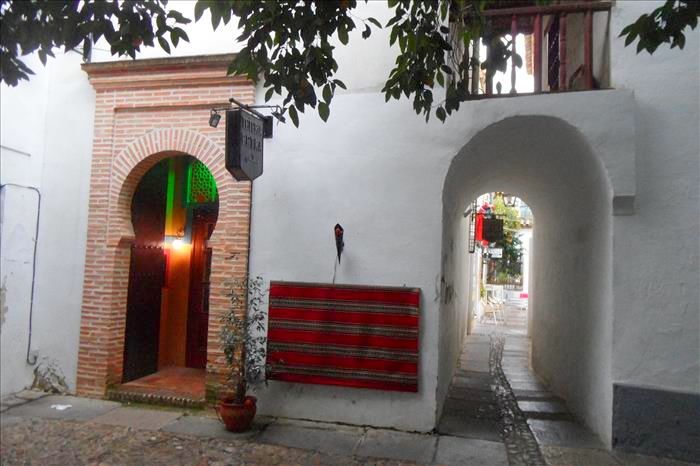
Córdoba Jewish Quarters
Wander into the Jewish Quarters to find the historic synagogue (dating to 1315, it’s one of the oldest in the world) and the Casa de Sefarad museum.
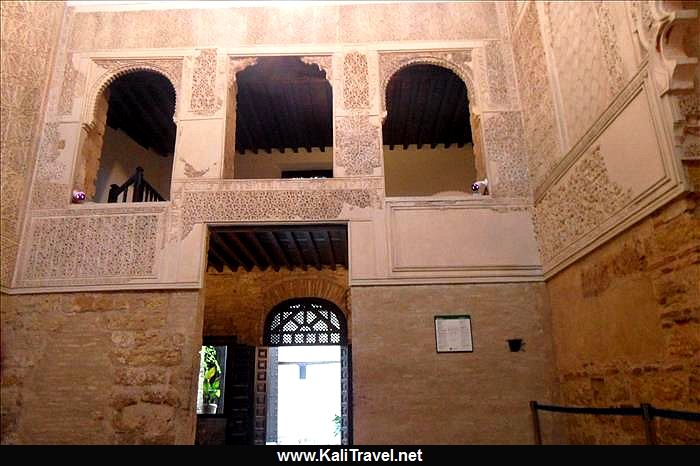
Walking under an archway into a patio, Córdoba Artisans’ Bazaar is the place to watch craftsmen making traditional Moroccan-style gifts. In fact, there’s a resemblance to the souks in Marrakesh.
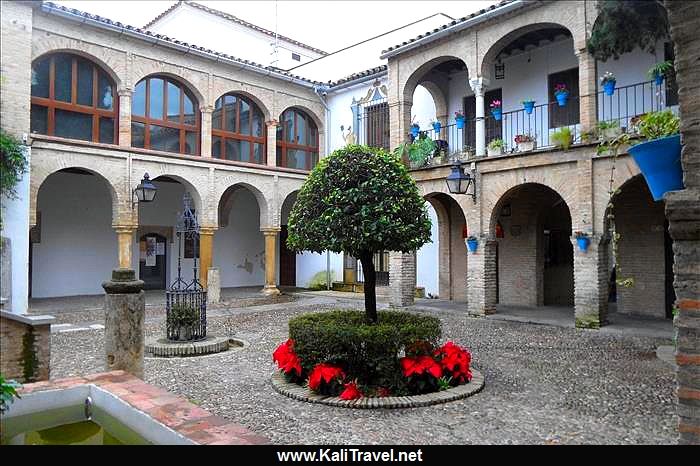
Córdoba Alcazar
Córdoba Alcázar overlooks the river Guadalquivir – an impressive 8th century fortress, it was rebuilt in 1328 as a Royal Palace and later became headquarters of the Spanish Inquisition! The lovely gardens are worth a visit. The adjacent Royal Stables (1567) were used for breeding pure Andalusian horses and the remains of the 10th century Caliphal Arab Baths are nearby.
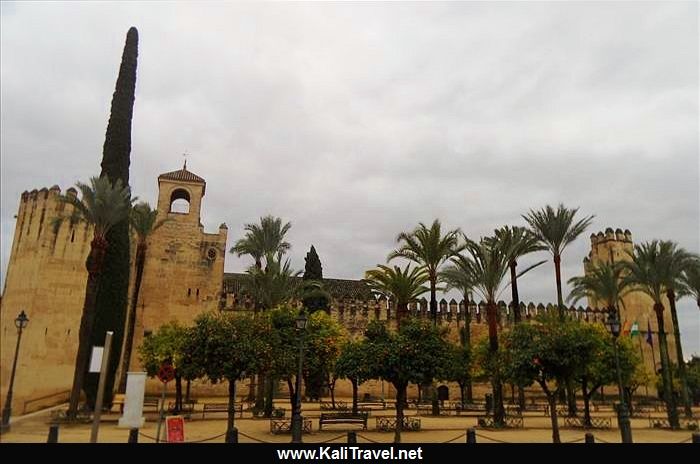
Córdoba Roman Bridge and River Guadalquivir
Pick up a guide map from the Tourist Info Bureau near Plaza del Triunfo and then pass by the magnificent 16th century Puerta del Puente. This gateway was once part of the city wall, and stands in front of a Roman Bridge which has spanned the Guadalquivir for 20 centuries!
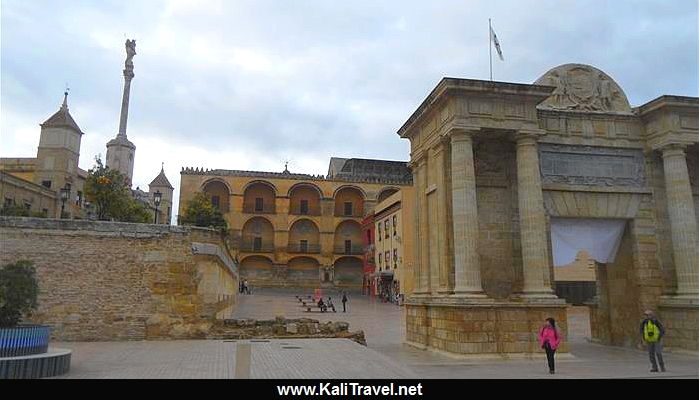
The ancient bridge was reconstructed in 1571 but still has two of the original arches. Stroll across ‘Tower Bridge’ to see Torre de la Calahorra (1369), a tower fortress built over an older Moorish defensive post.

Looking over the Roman Bridge you can see the remains of old flour mills down by the riverbank and the emblematic Albolafia Watermill which has been restored, sending water over a viaduct into the Alcázar Gardens.
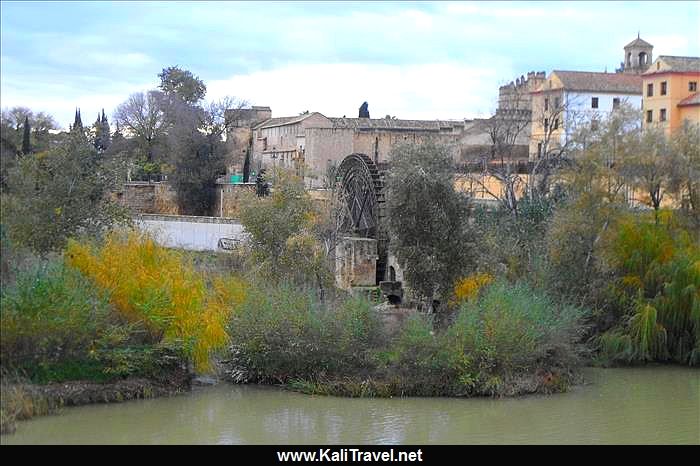
Dining in Córdoba and Local Cuisine
We walked back into the ‘old city’ towards the Mosque-Cathedral to find a restaurant I’d earmarked previously…
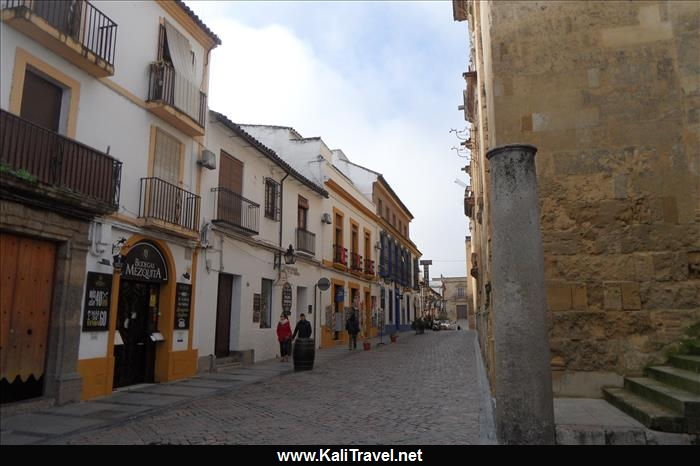
Bodegas Mezquita offers a fusion of the best Córdoban cuisine from three traditional cultures (Muslim, Christian and Jewish), authentic recipes elaborated from local produce and served Andalusian style in a choice of three portion sizes – tapas, half a serving or a full portion – this is a great way to share food and savour the different flavours.
We ordered ‘Aubergines Califa’ in batter with reduction of Pedro Ximénez, ‘Lamb Sefardí’ with honey, dried fruits and couscous, or ‘Oxtail Córdoba’ braised slowly with red wine and vegetables. The food is delicious, the service excellent and prices reasonable, so it’s not surprising the restaurant is a favourite with the locals too!
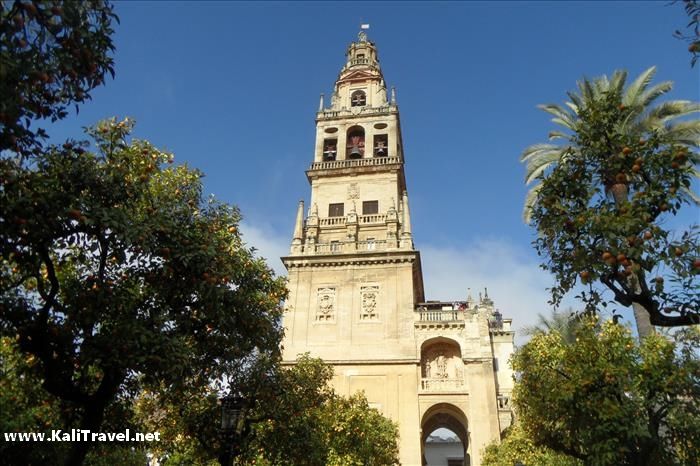
Unique UNESCO Sites to See in Spain
Córdoba old town is one of 22 World Heritage Cities in Spain – you might like to visit the UNESCO sites in Seville, Granada, Baeza and Úbeda while you’re in Andalusia or go on to Mérida and Cáceres in Extremadura; if you’re heading for Madrid don’t forget to see Toledo, Cuenca, Alcalá de Henares, Aranjuez, Segovia, Ávila.
Travel on to northern Spain to discover Salamanca, Atapuerca, Santiago de Compostela, Ferrol, Lugo, Oviedo, and San Millán de la Cogollo; Val de Boi, the sites of Barcelona, and Tarraco (Tarragona) in Catalonia; or Elche on the Costa Blanca; and finally San Cristobál de La Laguna on Tenerife in the Canary Islands.
Related Posts: Unique Cities to See In Andalucia
25 Reasons to Visit Córdoba World Heritage City
Córdoba historic centre is a UNESCO World Heritage City in Southern Spain. Here’s our choice of 25 sites to see and the top things to do when you visit Córdoba.
Ultimate Granada Guide – What to See in 3 days
Visiting Spain and only 3 days to see Granada? Here’s our ultimate city guide! Granada is an enchanting city, the ‘old town’ full of plazas & ancient monuments, and Alhambra Palace ‘World Heritage Site’…
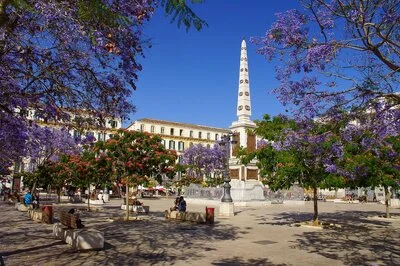
A complete guide to Málaga and places nearby. There are so many things to do in Málaga, lots of history, great food and beaches. Explore Málaga – sun, sea and history on Spain’s Costa del Sol.
2 Days Seeing the Unique Sights of Seville
2 days in Sevilla, southern Spain. The panoramic view from our terrace is stunning – Seville skyline backlit by the sunset, the unmistakable Giralda tower and a dozen church spires piercing the sky…
Discover the World with![]() the blog with a focus on independent travel
the blog with a focus on independent travel




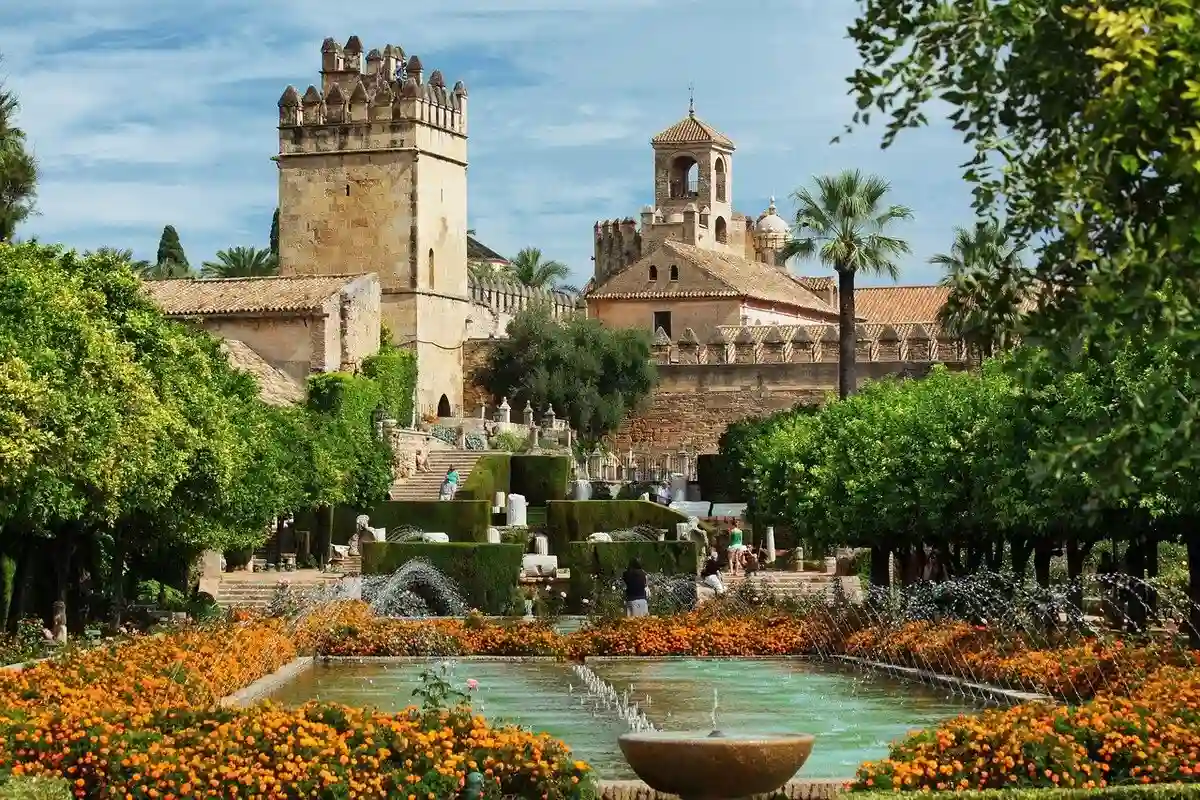
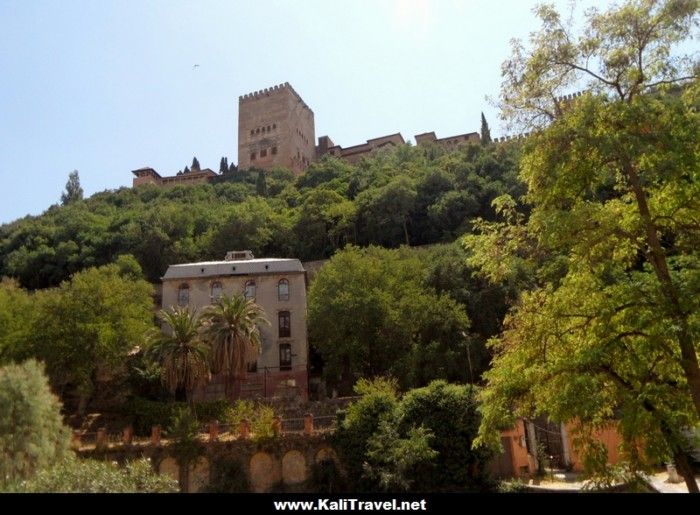
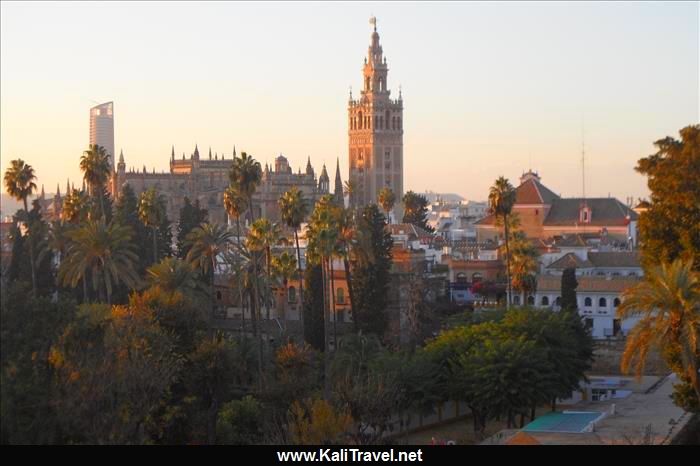
Moorish is always so moreish. I had no idea that Cordoba ever was of such global prominence. It’s been too long since I visited. Great post.
Cordoba is a lovely city to walk around, you can see examples of the 4 different cultures that lived there, including huge Roman columns and the original public square where they did charriot racing all those centuries ago!
A city I’d love to visit. The cathedral is so recognisable, a real symbol of Spain. Excellent taster for a visit.
The Cathedral Mosque is quite amazing and the bell tower too (you don’t want to go up when it chimes midday!). You’d love seeing Granada and Seville too!
I’ve only been to Spain once and never made it to cordoba. But it looks gorgeous. I actually really love arches as an architectural feature :) am I weird?
Cordoba is fascinating, the mixture of cultures and architectural styles. It’s a pretty little city which is easy to walk around…great to include on a road trip with Seville, Granada and Malaga!
The history are architecture are fascinating! Plus Cordoba is so close to other UNESCO world Heritage Sites. You can see so much in a short time.